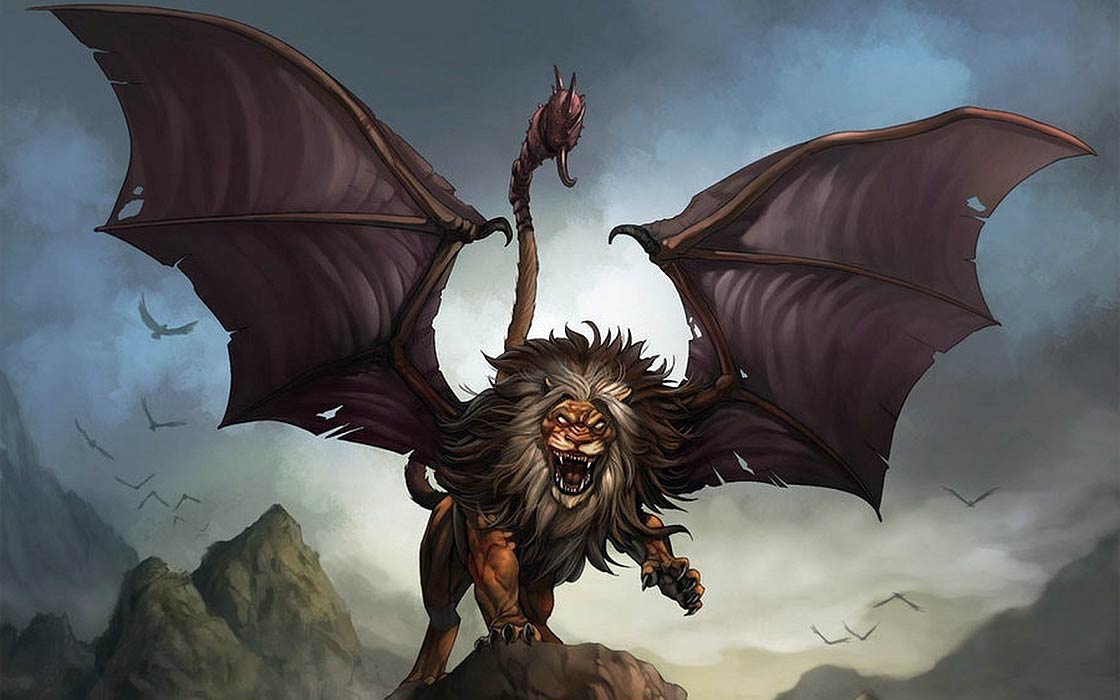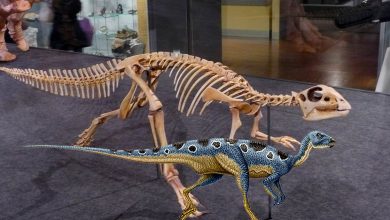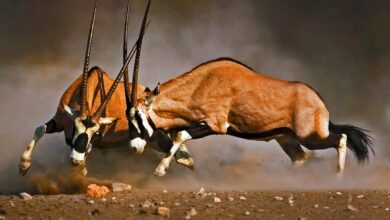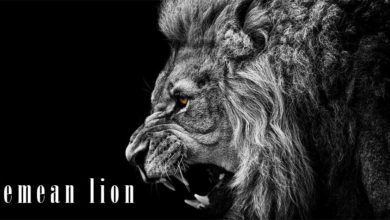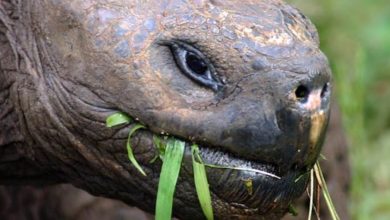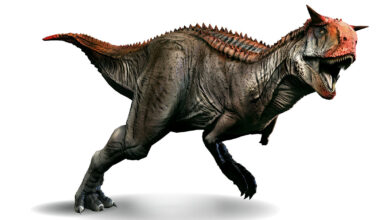Manticore (mantyger)
Manticore – a doppelganger of the Sphinx
Hybrid creatures ruled not only in Greece, the Persians also had a lot to say in this matter. One of their “pets” was the Manticore resembling the Egyptian Sphinx. The lion‘s body was covered with blood-red hair and was crowned with a human head equipped with three rows of sharp teeth (similar to a shark).
The Manticore was sometimes depicted with bat wings and a trumpet-like voice. In some variants of the same myth, the Manticore may have horns instead of wings, or both. A dragon or scorpion tail grows from the back of the body, from which it shoots poisonous spikes or paralyzes / kills its victims. The unfortunate man is devoured whole, leaving no clothes or bones behind.
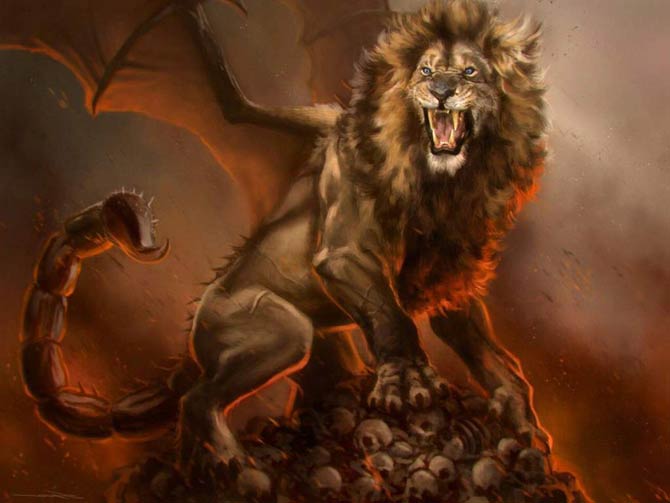
Name
In Persian it is called Martyaxwar (martya – “man” / “people” + xwar – “to eat”), that is a man-eater. It penetrated into European folklore thanks to Ctesias – a Greek physician and historian who served at the court of the Persian king Artaxerxes II Mnemon (4th century BC). Ctesias made many references to Persian beliefs in his book “Indica”, which in time began to circulate among Greek writers.
In the Middle Ages, the Manticore was perceived as a combination of a human and a tiger due to a false etymology, although there are sources regarding it as a completely different creature, e.g. having monkey feet (inspired by baboons), tusks or short horns. Over time, her image began to appear in heraldry, mainly English.
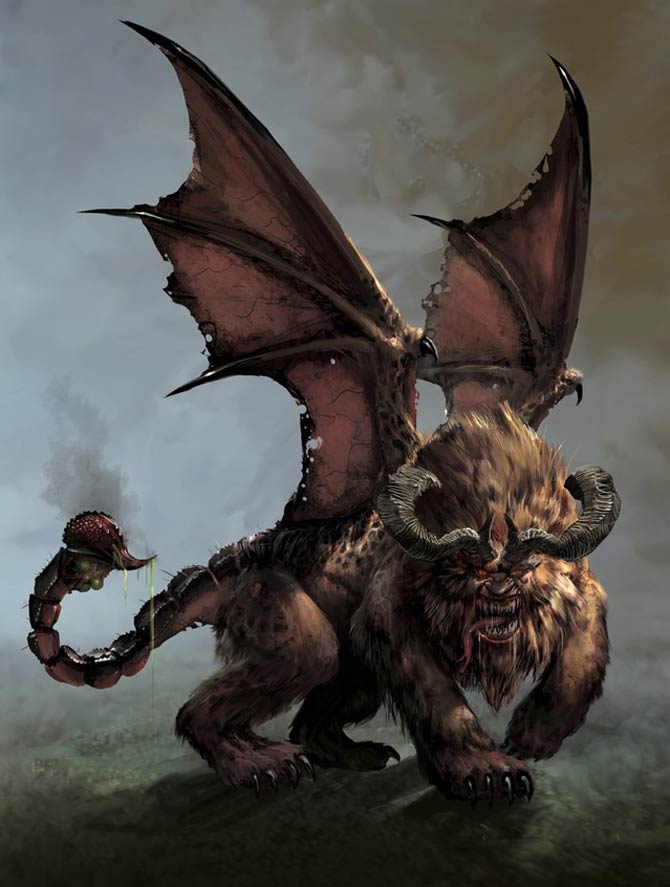
Manticore in history
The most complete of the ancient descriptions of the manticore was made in the 2nd century AD. Claudius Elian (On the Nature of Animals). He gives several interesting details: “Anyone who approaches her is amazed with her sting… The poisonous thorns on her tail are comparable in thickness to the stalk of reeds, and are about 30 centimeters long … She is able to defeat any of the animals, with the exception of the lion.” … In the II century A.D. Flavius Philostratus the Elder, mentions the manticore as one of the miracles about which Apollonius of Tyana asks on the hill of the sages.
The Greek geographer Pausanias, however, was skeptical about the stories about the manticore and in the book “Description of Hellas” noted that the mythical manticore is most likely just a tiger. From the point of view of Pausanias, red monochromatic color Manticore – the result of observations striped tiger at sunset and in motion, and the fantastic details like a triple row of teeth and shoot poisonous tail blade – was just fiction superstitious humans, panic-stricken by the fear of the tiger.
Although the manticore is rarely mentioned in ancient scientific books, medieval bestiaries abound in descriptions of it. From there, the manticore migrated to folklore works. So, in the XIII century, Bartholomew of England wrote about her, in the XIV William Caxton wrote about her in the book “The Mirror of the World”. Caxton’s three rows of manticore teeth have turned into “a palisade of huge teeth in her throat”, and her voice, like the melody of a pipe, has become “a sweet serpentine hiss, which she draws people to her to then devour them.”
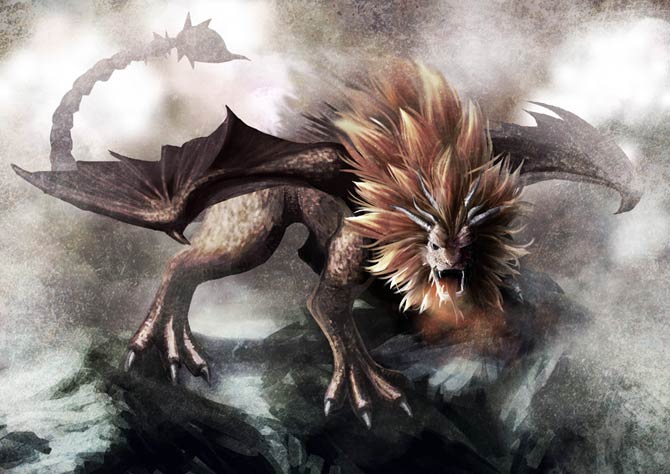
Manticore – trivia
- In the Middle Ages, the manticore became a symbol of tyranny, oppression and envy, and finally the embodiment of evil.
- Although the manticore is a fairy-tale creature, it appears, for example, on the pews for canons (stalls) in some basilicas.
- The manticore is used as an inspiration in popular music; Groups such as the British progressive rock band Emerson, Lake and Palmer, who also named their music label Manticore Records after him, the metal bands Manticora, Cradle of Filth, Hate Squad, 3 Inches of Blood and Kromlek refer to it.
- The manticore appears frequently in fantasy games, including in role-playing games such as Dungeons and Dragons, The Black Eye, the trading card game Magic: The Gathering, and computer games such as Witcher, Heroes of Might and Magic, Final Fantasy, World of Warcraft and Dragon Nest – mostly as antagonists.
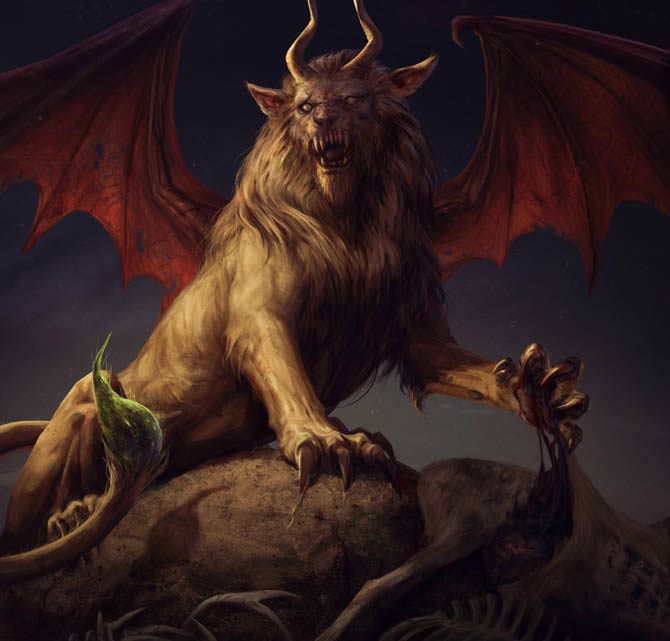
Recommended
- Cryptozoology
- Horses in mythology
- Werewolf, werewolves
- Giant snakes and sea monsters
- King Kong
- Godzilla
- Dragons
- Loch Ness monster
- Minnesota Iceman
- Yeti
- Bigfoot (Sasquatch)
- Yowie
- Alma
- Mokele-mbembe
- Beast of Gévaudan
- Orang Pendek
- Marozi
- Nadi Bear
- Aboriginal Rainbow Serpent
- Dyatlov Pass incident
- Animal records

